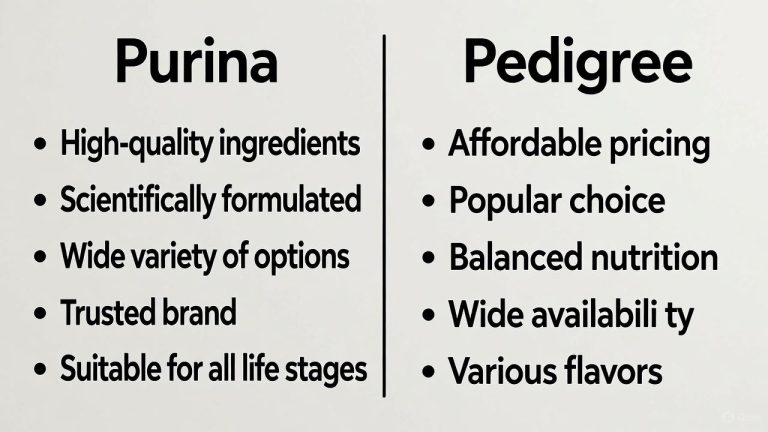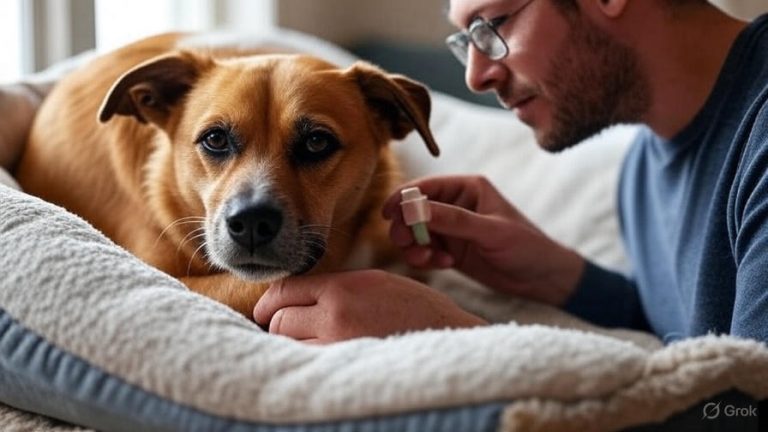How to Keep Ants Out of Your Cat’s Food?
Every cat owner knows the frustration of discovering tiny black invaders marching toward their feline friend’s food bowl. Ants can turn mealtime into a nightmare, contaminating your cat’s nutrition and creating an unsanitary feeding environment. This comprehensive guide reveals proven strategies to protect your cat’s meals from these persistent pests.
Why Ants Target Cat Food
Ants possess an incredible ability to detect food sources from remarkable distances. Cat food attracts these insects because it contains high levels of protein, fat, and moisture – exactly what ant colonies need to thrive. Dry kibble releases aromatic compounds that act like dinner bells for nearby ant scouts. Wet cat food presents an even more irresistible target due to its strong scent and moisture content.
The problem escalates quickly once scout ants discover your cat’s feeding area. These scouts leave pheromone trails that guide hundreds of worker ants directly to the food source. Within hours, you might find long lines of ants streaming across your floor, walls, and countertops.
Pet food also tends to accumulate in feeding areas, creating crumbs and spills that provide continuous sustenance for ant colonies. Your cat’s eating habits contribute to this issue – most cats scatter kibble around their bowls or leave wet food remnants that dry into crusty deposits.
Health Risks of Ants in Cat Food
Ants in cat food pose several health concerns for your feline companion. These insects can carry bacteria, parasites, and other pathogens that contaminate your cat’s meals. Some ant species bite or sting, which can cause allergic reactions in sensitive cats.
Contaminated food loses its nutritional value and freshness. Ants introduce foreign substances that can upset your cat’s digestive system, leading to vomiting, diarrhea, or reduced appetite. The stress of competing with ants for food can also affect your cat’s eating behavior and overall wellbeing.
Certain ant species secrete formic acid as a defense mechanism. This chemical compound can irritate your cat’s mouth, throat, and digestive tract if consumed in significant quantities. Fire ants pose particular risks due to their aggressive nature and painful stings.
Immediate Solutions to Remove Ants
When you discover ants in your cat’s food, take immediate action to eliminate the problem. Start by removing all contaminated food and thoroughly cleaning the feeding area. Use warm, soapy water to wash food bowls, placemats, and surrounding surfaces.
Create a vinegar solution by mixing equal parts white vinegar and water in a spray bottle. Spray this mixture along ant trails and around the feeding area. The acidic nature of vinegar disrupts ant pheromone trails and deters future invasions. Wipe down all surfaces with this solution and allow them to air dry.
Remove any food sources that might attract ants back to the area. Vacuum up scattered kibble, clean sticky wet food residue, and sanitize water bowls. Check for hidden food particles under appliances, in corners, and along baseboards.
Locate the ant entry points by following their trails backward. Common entry points include cracks in walls, gaps around windows and doors, and spaces near plumbing fixtures. Seal these openings with caulk, petroleum jelly, or other appropriate materials.
Physical Barriers and Feeding Station Setup
Creating physical barriers prevents ants from reaching your cat’s food in the first place. Elevate feeding stations off the ground using stands, tables, or wall-mounted platforms. This strategy forces ants to climb vertical surfaces, which many species find challenging.
Design a moat system around your cat’s food bowls using shallow dishes filled with water. Place the food bowl in the center of a larger plate or tray filled with water. Ants cannot cross water barriers, making this method highly effective for ground-level feeding stations.
Install feeding stations with smooth, slippery surfaces that ants cannot grip. Glass or ceramic platforms work exceptionally well because their smooth textures prevent ants from climbing. Apply a thin layer of petroleum jelly around the base of elevated feeding stations for extra protection.
Consider using feeding stations with built-in ant deterrent features. Some commercial pet feeding stations include water-filled moats, elevated platforms, and sealed storage compartments. These all-in-one solutions provide comprehensive protection against ant invasions.
Natural Deterrents and Safe Repellents

Natural deterrents offer safe, effective ways to keep ants away from cat food without using harmful chemicals. Cinnamon acts as a powerful ant repellent due to its strong scent and natural compounds. Sprinkle ground cinnamon around feeding areas, creating barriers that ants refuse to cross.
Coffee grounds provide another excellent natural deterrent. Used coffee grounds contain compounds that disrupt ant communication and navigation. Spread dried coffee grounds around the perimeter of feeding areas, replacing them weekly to maintain effectiveness.
Essential oils like peppermint, lemon, and tea tree oil create aromatic barriers that repel ants. Mix a few drops of these oils with water in a spray bottle and apply around feeding stations. These oils are generally safe for cats when used in small quantities, but always ensure proper ventilation.
Chalk contains calcium carbonate, which interferes with ant navigation systems. Draw chalk lines around feeding areas or crush chalk into powder and sprinkle it strategically. This method provides a visible reminder of your pest control efforts while effectively deterring ants.
Diatomaceous earth (food-grade only) creates microscopic barriers that damage ant exoskeletons. Sprinkle thin lines of diatomaceous earth around feeding stations, ensuring you use only food-grade versions that are safe for pets.
Proper Food Storage Techniques
Proper storage prevents ants from accessing cat food before it reaches your pet’s bowl. Store dry kibble in airtight containers made of glass, metal, or thick plastic. These containers prevent scent molecules from escaping and advertising your cat’s food to nearby ant colonies.
Transfer wet cat food to sealed containers immediately after opening. Refrigerate unused portions in airtight containers to prevent spoilage and reduce attractiveness to ants. Clean storage containers regularly to eliminate food residue that might attract pests.
Keep storage areas clean and dry. Ants thrive in moist environments, so maintaining low humidity levels around food storage areas helps discourage infestations. Use moisture-absorbing packets or dehumidifiers in storage areas if necessary.
Rotate food supplies regularly using the “first in, first out” principle. Older food products may develop stronger scents that attract ants more readily. Fresh food maintains better nutritional value and produces fewer attractant compounds.
Cleaning and Maintenance Strategies
Regular cleaning prevents ant problems before they start. Establish a daily routine that includes washing food bowls, wiping down feeding areas, and removing scattered kibble. This proactive approach eliminates the food sources that attract scout ants.
Deep clean feeding areas weekly using enzyme-based cleaners that break down organic residues. These specialized cleaners eliminate odors and food particles that regular soap and water might miss. Pay special attention to corners, crevices, and areas under appliances.
Inspect feeding areas regularly for signs of ant activity. Look for ant trails, small piles of dirt or debris, and tiny holes in walls or floors. Early detection allows you to address problems before they become major infestations.
Maintain clean water sources by changing water daily and washing bowls thoroughly. Stagnant water attracts ants and other pests, so fresh water helps maintain a less attractive environment for unwanted visitors.
Strategic Feeding Schedule Changes
Modifying your cat’s feeding schedule can significantly reduce ant problems. Implement scheduled feeding times instead of leaving food out all day. This approach limits the time window during which ants can discover and exploit food sources.
Feed your cat during times when ant activity is typically lower. Most ant species are less active during cool morning hours or late evening. Observe ant patterns in your home to identify optimal feeding times.
Remove uneaten food within 30 minutes of serving. This practice prevents food from sitting out long enough to attract scout ants. Train your cat to eat within designated time frames by gradually reducing the amount of time food remains available.
Consider multiple smaller meals throughout the day instead of one or two large servings. Smaller portions reduce the likelihood of leftover food that might attract ants. This feeding strategy also provides better nutrition for your cat.
Environmental Modifications
Modify your home environment to make it less attractive to ants. Eliminate moisture sources near feeding areas by fixing leaky pipes, improving ventilation, and using dehumidifiers. Dry environments discourage ant colonies from establishing nearby territories.
Remove outdoor attractants that might draw ants toward your home. Trim vegetation away from exterior walls, eliminate standing water, and keep outdoor areas clean. Ants that establish colonies near your home are more likely to venture inside.
Seal entry points throughout your home using caulk, weatherstripping, or other appropriate materials. Focus on areas near feeding stations, but don’t ignore other potential entry points throughout your home. Comprehensive sealing prevents ants from establishing multiple access routes.
Create buffer zones around your home using natural deterrents. Plant ant-repelling herbs like mint, tansy, or pennyroyal around your home’s perimeter. These plants release compounds that discourage ant colonies from settling nearby.
Professional Pest Control Options
Sometimes professional intervention becomes necessary for severe ant infestations. Pest control professionals can identify ant species, locate colony sources, and implement targeted treatment strategies. They possess specialized equipment and knowledge that homeowners typically lack.
Professional treatments often provide longer-lasting results than DIY methods. Pest control experts can treat ant colonies at their source, preventing new waves of invaders from targeting your cat’s food. They also provide ongoing monitoring and maintenance services.
When hiring pest control services, specify that you have pets and need pet-safe treatment options. Many professional treatments are designed to be safe around cats while remaining effective against ants. Discuss your specific concerns and requirements with potential service providers.
Consider professional consultation even if you plan to handle the problem yourself. Pest control experts can provide valuable insights about ant behavior, identification, and prevention strategies specific to your home and local ant species.
Long-term Prevention Strategies
Successful ant prevention requires consistent, long-term efforts. Develop a comprehensive maintenance routine that includes regular cleaning, monitoring, and preventive treatments. Consistency is key to keeping ant problems from recurring.
Document your efforts and results to identify the most effective strategies for your specific situation. Keep records of which methods work best, when ant activity peaks, and what conditions seem to trigger infestations. This information helps you refine your approach over time.
Stay vigilant for early warning signs of ant activity. Address minor issues immediately before they develop into major problems. Early intervention is always more effective and less disruptive than dealing with established infestations.
Educate family members about ant prevention practices. Everyone in your household should understand the importance of cleaning up food spills, storing food properly, and maintaining clean feeding areas. Collective effort produces better results than individual actions.
Conclusion
Keeping ants out of your cat’s food requires a multi-faceted approach that combines immediate solutions with long-term prevention strategies. Physical barriers, natural deterrents, proper storage, and regular cleaning form the foundation of effective ant control. Environmental modifications and strategic feeding practices provide additional layers of protection.
Remember that consistency and persistence are essential for success. Ant problems rarely resolve overnight, but dedicated effort using these proven strategies will protect your cat’s meals and create a more pleasant feeding environment. Monitor your progress, adjust your approach as needed, and don’t hesitate to seek professional help when necessary.
Your cat deserves clean, pest-free meals, and you deserve peace of mind knowing that their nutrition is protected from unwanted invaders. With the right combination of strategies and consistent implementation, you can successfully keep ants away from your cat’s food and maintain a healthy, happy feeding routine for your feline companion.







